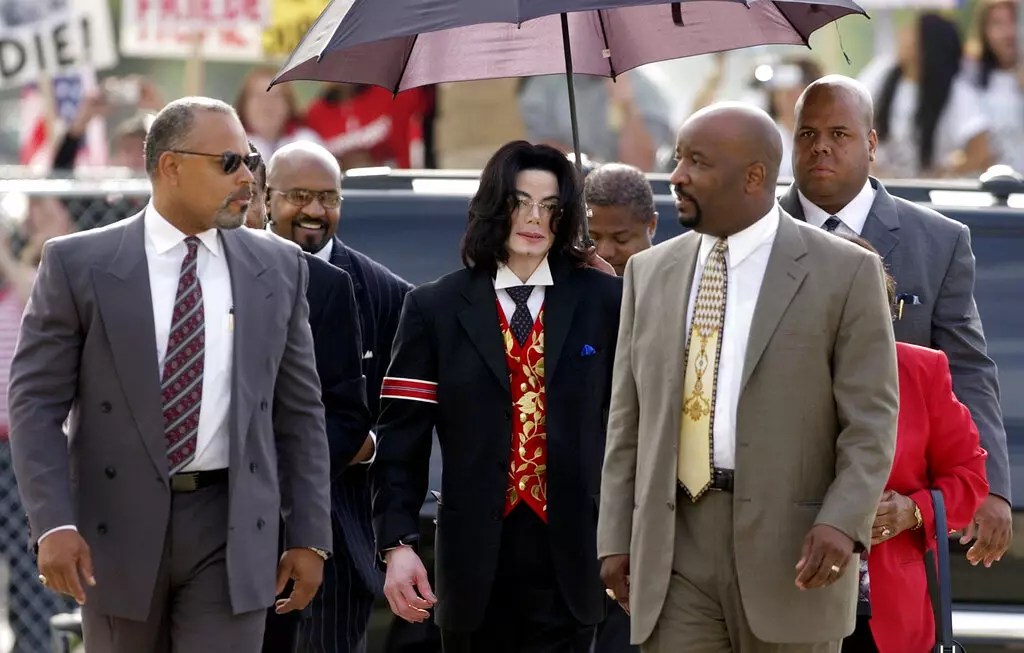In the ever-evolving world of broadcasting, two significant trends have emerged, catching the attention of both audiences and industry insiders alike: the exploration of controversial personalities and the growing emphasis on safety and inclusivity in production. As these narratives unfold, they not only reveal the complexities within the media landscape but also highlight how public perception interacts with creative storytelling.
An ambitious project in this realm is the upcoming documentary series “The Trial of Michael Jackson” being produced by Channel 4 in collaboration with Wonderhood Studios. This docuseries aims to present a nuanced portrayal of Michael Jackson’s life, particularly focusing on his tumultuous 2005 criminal trial for allegations of child molestation, which ultimately resulted in his acquittal. By incorporating firsthand accounts from individuals who have remained silent until now, the series promises to shed light on not just Jackson’s infamous trial but also his meteoric rise and the relentless media scrutiny that accompanied it.
The public’s curiosity about Jackson remains palpable, evidenced by the success of the earlier docuseries “Leaving Neverland,” which reignited older allegations with new voices. This juxtaposition of Jackson’s celebrated artistry against his controversial legal battles raises questions about the ethics of biographical storytelling. Does revisiting such painful subjects serve therapeutic purposes, or does it merely sensationalize tragedy for entertainment?
This documentary is poised to forge deeper connections with audiences exploring how media shapes and distorts the narratives of public figures. The inclusion of previously unheard perspectives may offer insights into Jackson’s complex relationship with fame, helping to humanize a persona often reduced to tabloid headlines. Yet, the real challenge lies in balancing sympathy with accountability, ensuring that the narrative honors the gravity of the allegations without trivializing them.
Enhancing Safety with Intimacy Coordinators
Meanwhile, a different but equally vital development is unfolding in the UK with the establishment of the first-ever registry for intimacy coordinators by the broadcasting union Bectu. This initiative reflects a response not only to the cultural shifts sparked by the #MeToo movement but also to increasing recognition of the critical role that intimacy coordinators play in creating safer work environments on set. As productions adopt these practices, a new standard is being established that prioritizes the well-being of performers during scenes that require heightened vulnerability.
This push for structured guidelines fosters an atmosphere of trust and respect, allowing actors to perform intimate scenes without fear of misconduct or discomfort. The recognition of intimacy coordination as a formalized profession may also encourage a broader acceptance of such roles across the industry. Although the call for these positions originates from an emerging need for safety, it also poses a pressing question: How will this institutionalization affect the creative process?
While some may assume that the presence of intimacy coordinators may impose restrictions on artistic expression, it can also pave the way for more authentic and consensual storytelling. By integrating these professionals into the collaboration process, stories can be told with greater sensitivity, ultimately enriching the narrative while still adhering to ethical standards.
Another noteworthy point on the broadcasting landscape is the BBC’s announcement of “An t-Eilean” (The Island), billed as the most expensive Gaelic drama to date. With its unique blend of Gaelic and English, the show demonstrates the network’s commitment to diversifying its content while honoring local cultures. With a talented cast that includes industry favorites alongside new faces, the production signals a shift toward a more global perspective, where niche storytelling can find its place alongside mainstream projects.
The BBC’s decision to branch out and invest considerable resources into Gaelic drama could reflect a broader movement towards recognizing and celebrating regional identities in media. In an era where representation matters more than ever, shows like “An t-Eilean” serve as significant cultural touchstones, enabling audiences both familiar and new to engage with stories that resonate across linguistic and cultural boundaries.
The dynamics of broadcasting are undergoing profound change, highlighted by projects that confront past controversies, elevate marginalized voices, and embrace regional storytelling. As both creators and consumers, we must remain vigilant in questioning the narratives being constructed, ensuring they foster understanding, respect, and a genuine reflection of the diverse society we inhabit.


Leave a Reply